Art World
What Was the Most Influential Exhibition of the Decade? We Asked Dozens of Art-World Experts for Their Pick
Industry leaders weigh in on which shows define the era.
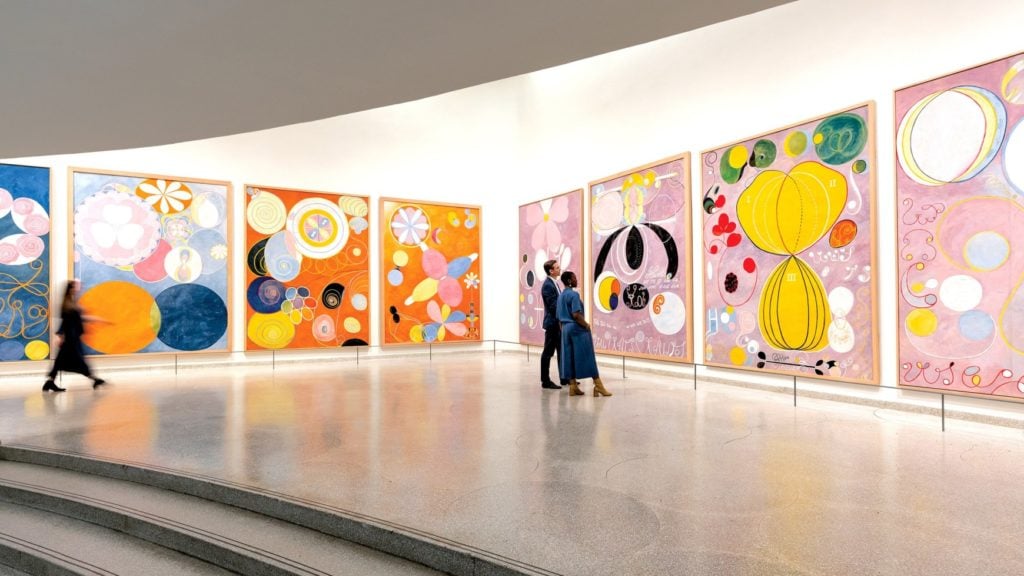
Industry leaders weigh in on which shows define the era.

Artnet News

As the turbulent and event-filled 2010s come to an end, we asked more than 100 artists, curators, gallerists, and other art-world figures to tell us their picks of the most influential art and art-makers of the decade. Here is a selection of their responses.
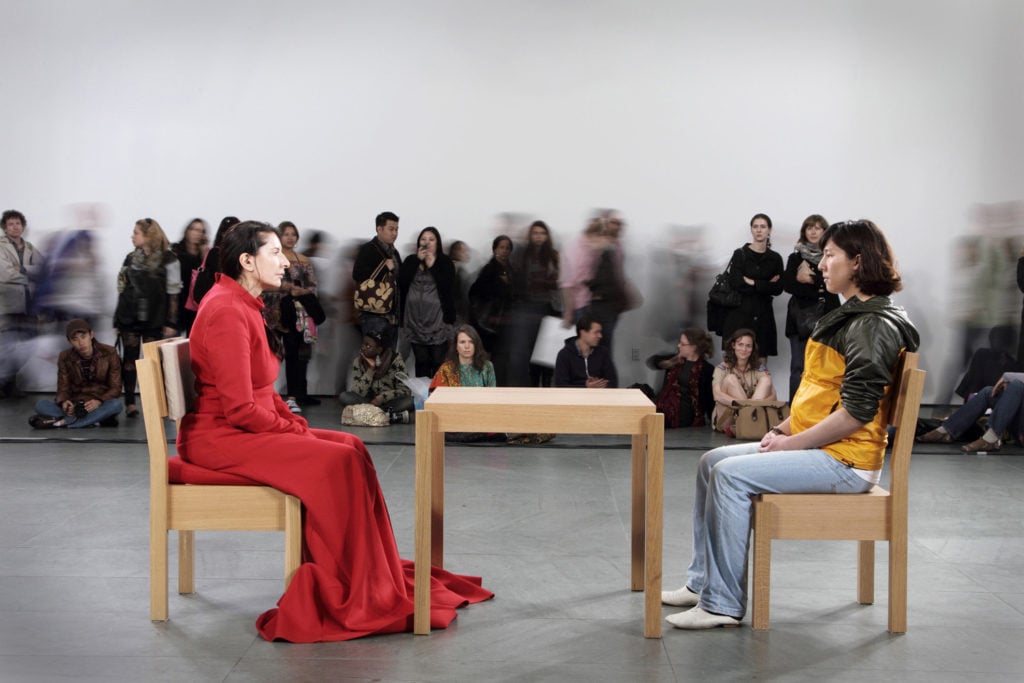
Marina Abramović, The Artist is Present (2010). Courtesy of the artist and Sean Kelly Gallery.
Marina’s exhibition allowed us to appreciate performance art through the idea of restaging works that we once may have thought of as ephemeral and one-time events, only experienced after the event through photographs. The MoMA exhibition changed our idea of performance art as a medium that could evolve beyond that first performance with the artist.
—Melissa Chiu, director of the Hirshhorn Museum and Sculpture Garden
Marina Abramović offering the audience a seat at the proverbial table in “The Artist Is Present” kicked off the ethos of the decade—even for those who watched from afar, like me.
—Carmen Hermo, associate curator at the Brooklyn Museum
I would say Marina Abramović’s “The Artist Is Present” at MoMA kicked off the decade in 2010 and redefined the genre of career retrospectives and spectacle. The press and public reached a new level of engagement, and never have I seen such an audience so driven to visit and revisit the show, either before or since.
—Elizabeth Dee, co-founder and CEO, Independent Art Fair
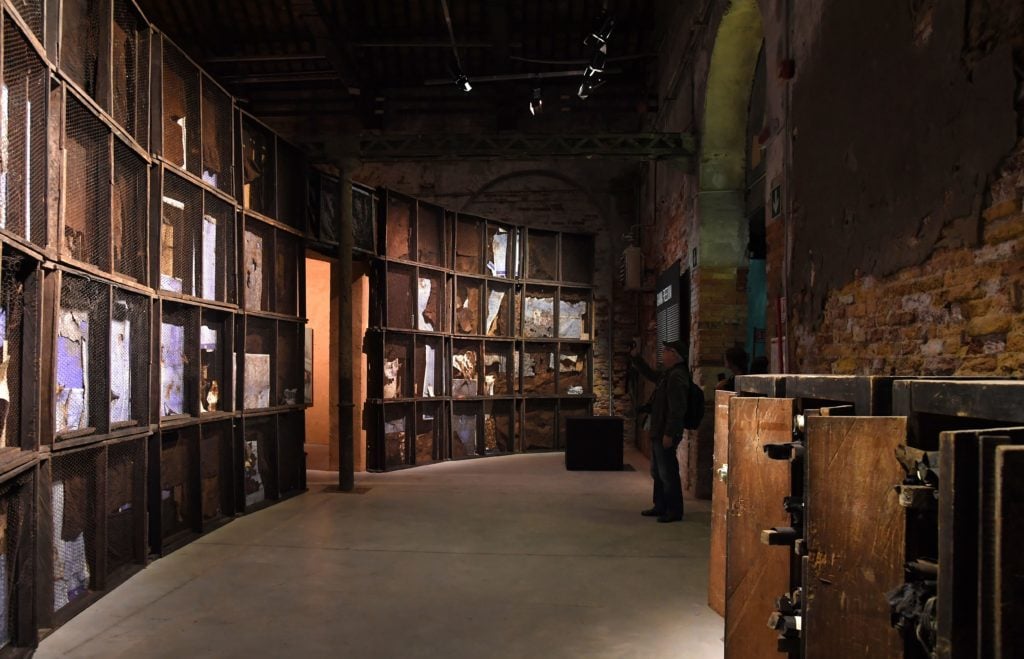
A Straight Line Through the Carcass of History by Ibrahim Mahama at the Ghana Pavilion. Photo: Tiziana Fabi/AFP/Getty Images.
The “Ghana Freedom” exhibition at Ghana’s Pavilion at the 58th Venice Art Pavilion 2019 presented works by some of the most important artists and architect of our times: Felicia Abbas, John Akomfrah, Lynette Yiadom-Boakye, Ibrahim Mahama, and El Anatsui in an installation by David Adjaye. Curated by Nana Oforiatta Ayim, it was a game changer.
—Julia Peyton-Jones, senior global director at Thaddaeus Ropac
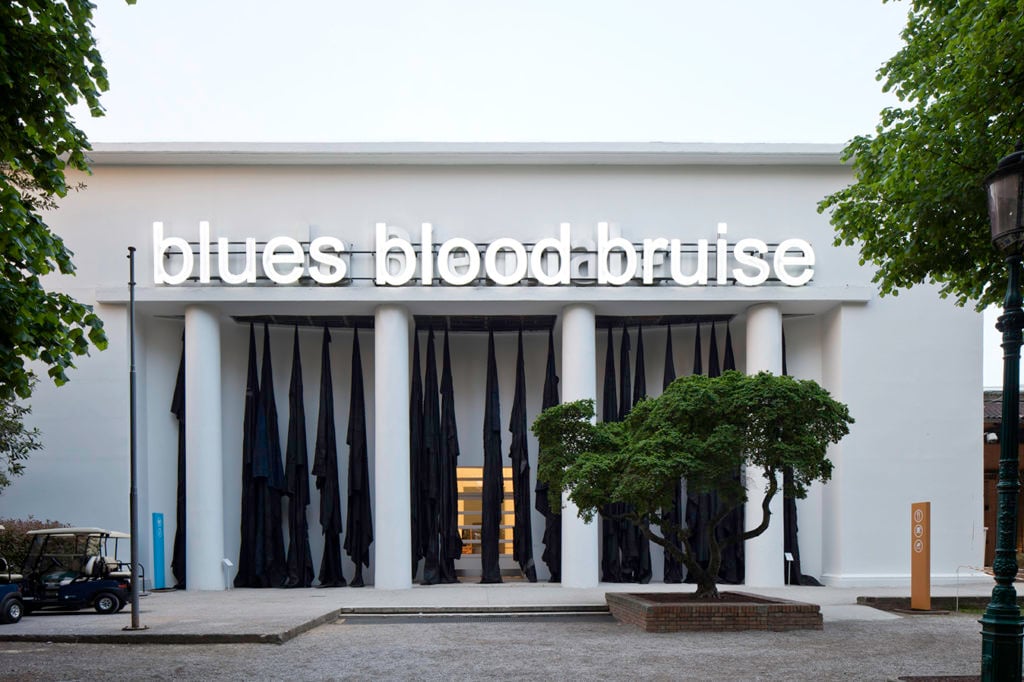
View of the central pavilion, “All the World’s Futures,” at the 2015 Venice Biennale.
Okwui Enwezor’s impressive and deeply moving exploration of artists’ attempt to address social and political conflicts compelled the art world to think globally.
—Coco Fusco, artist and activist
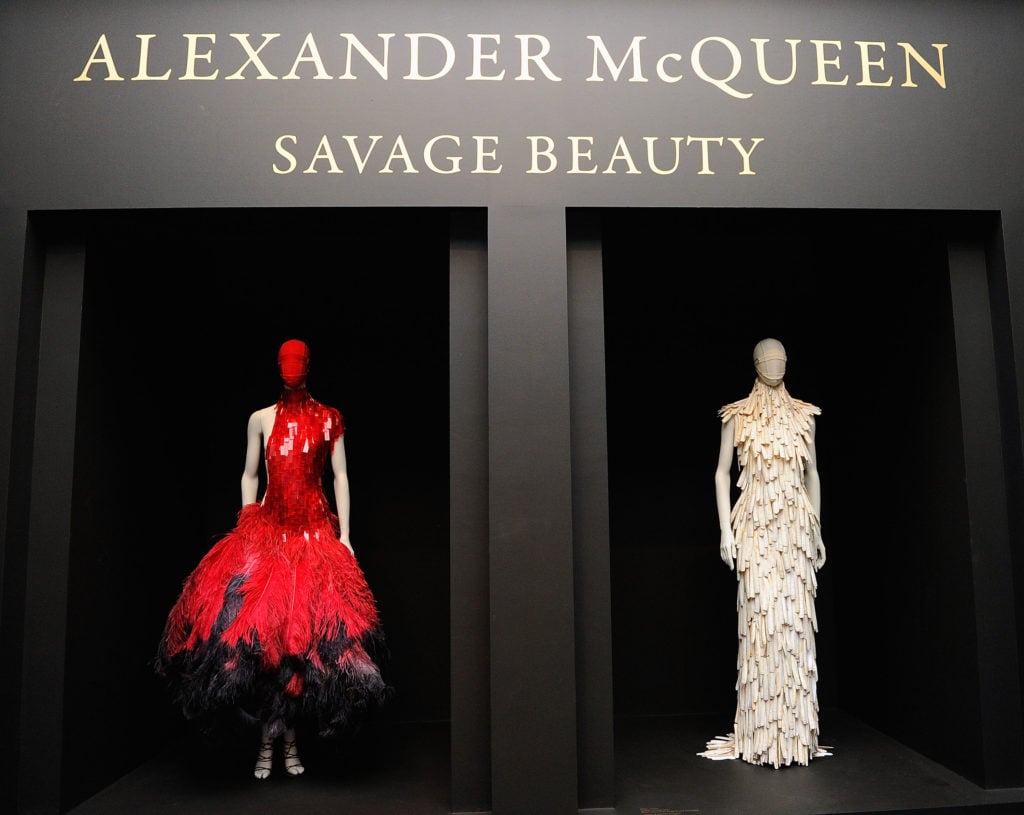
Installation view of “Alexander McQueen: Savage Beauty” Costume Institute exhibition at the Metropolitan Museum of Art on May 2, 2011, in New York City. Photo by Andrew H. Walker/Getty Images.
Alexander McQueen at the Metropolitan Museum of Art, because it demonstrated how the work of a fashion designer could be treated as an immersive art form, which has led to fashion being treated much more broadly and internationally as an art.
—Charles Saumarez Smith chairman of the Royal Drawing School and Watercolor World
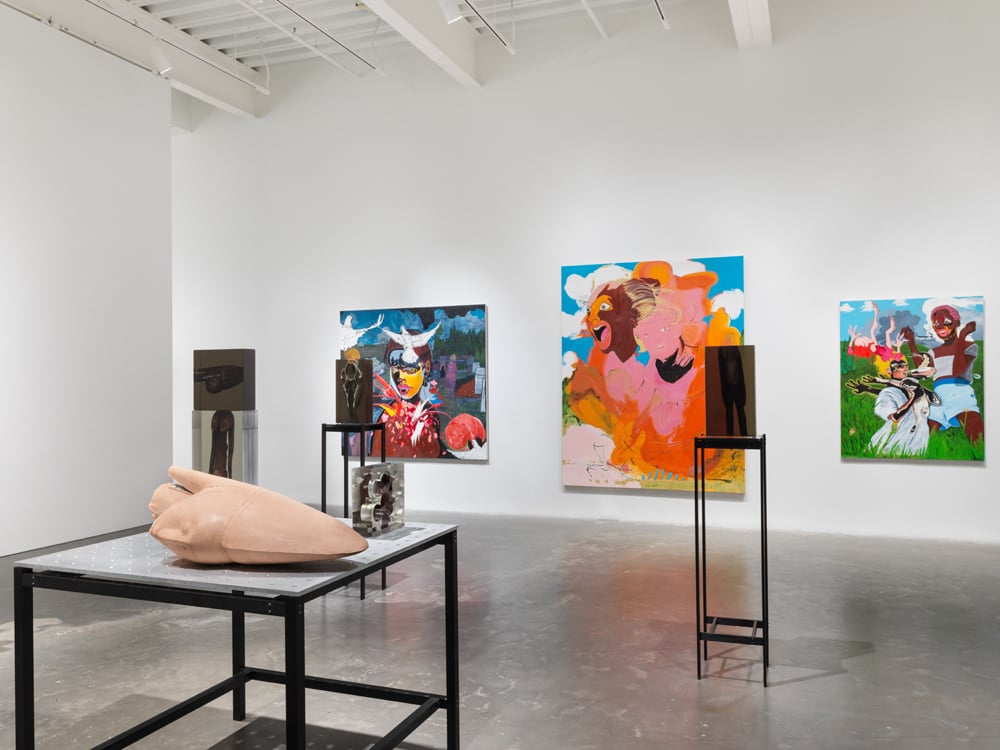
Installation view of “Songs for Sabotage” at the New Museum. Photo: Maris Hutchinson/EPW Studio, courtesy of the New Museum.
The New Museum’s group exhibition Songs for Sabotage brought to the forefront artists like Manuel Solano and Diamond Stingily, both artists that I had been collecting and admired, but this exhibition put them into dialogue with their contemporaries.
—Javier Peres, founder of Peres Projects
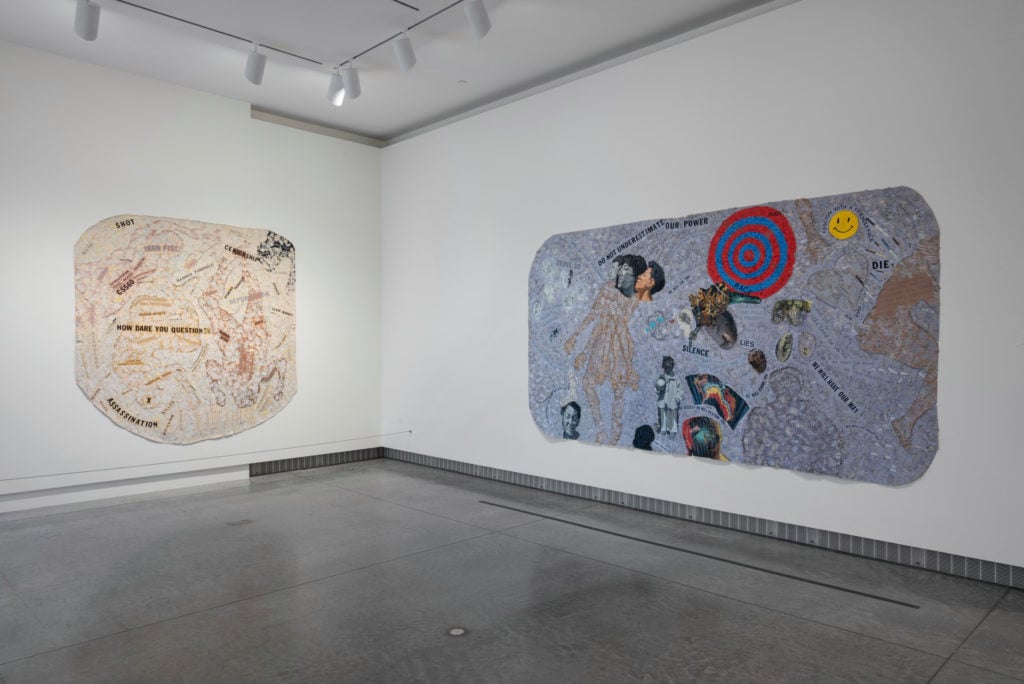
Gallery views of “Howardena Pindell: What Remains To Be Seen” 2018.
Photo: David Stover © Virginia Museum of Fine Arts.
“Hilma af Klint: Paintings for the Future” at the Guggenheim and “Howardena Pindell: What Remains to Be Seen” both brought the work of important, under-recognized women artists to the fore, something that is near and dear to the Aldrich’s heart.
—Cybele Maylone, executive director of the Aldrich Contemporary Art Museum
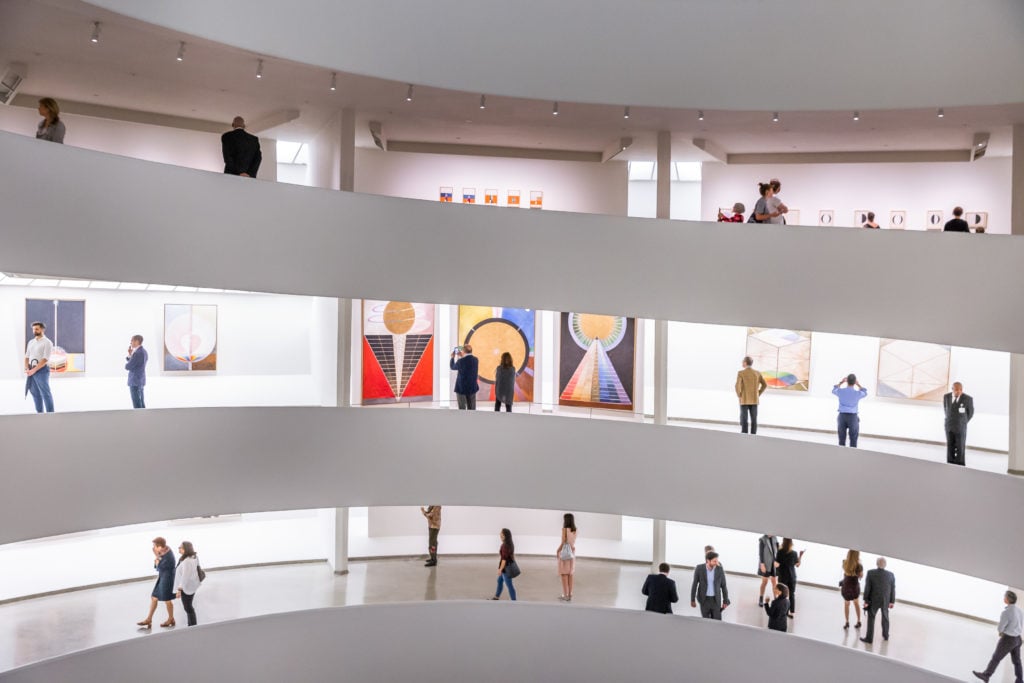
Opening for “Hilma af Klint: Paintings for the Future.” Photo: Paul Rudd © Solomon R. Guggenheim Foundation.
“Hilma af Klint: Paintings for the Future” at the Guggenheim. It seems to me that Frank Lloyd Wright’s spiral was waiting for many decades for the arrival of af Klint’s work and that they made legible again key aspects of the building’s original aspiration. The show changed the perception of the Guggenheim and MoMA had to react too.
—Daniel Birnbaum
Hilma af Klint at the Guggenheim was the show I found most inspiring and influential this past decade. Curator Tracey Bashkoff brought our attention to an artist who was largely ignored during her own lifetime and after (partially due to her own reclusiveness). Her work transcends painting and encapsulates tenets of spirituality and meditation, without sacrificing aesthetics in the least.
—Alexander S.C. Rower, president of the Calder Foundation
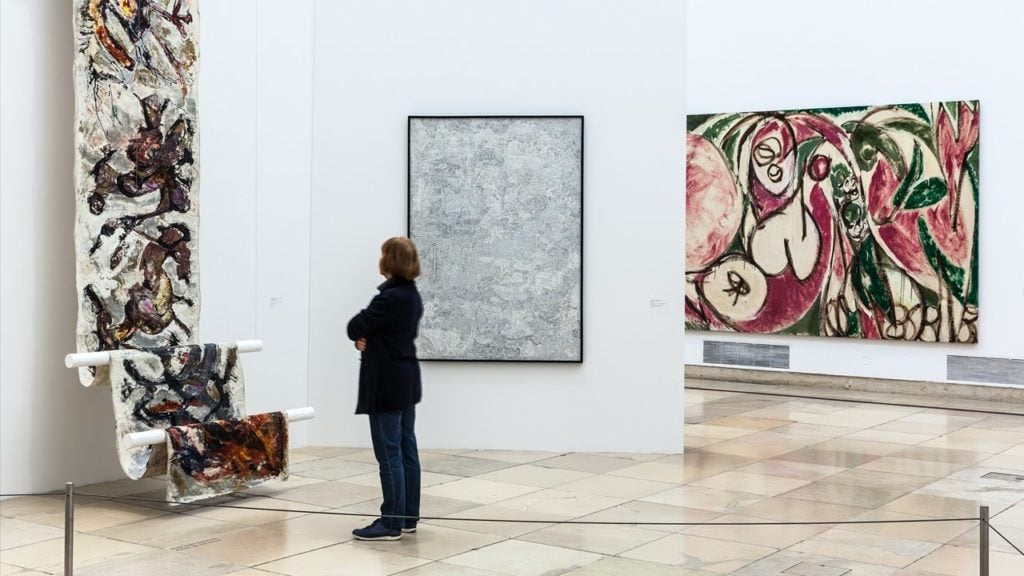
Installation view of “Postwar: Art Between the Pacific and the Atlantic, 1945–1965” at the Haus der Kunst. Image courtesy of Haus der Kunst.
The most influential show of the decade was “Postwar: Art Between the Pacific and the Atlantic, 1945–1965“ curated by Okwui Enwezor for the Haus der Kunst in Munich. The exhibition presented so many great artist from the postwar period and made once more clear that art despite the eurocentric view of many institutions is and was always a global phenomenon.
—Yilmaz Dziewior, director of Museum Ludwig, Cologne
The late, great Okwui Enwezor’s grand swan song, this exhibition examined art during this key 20-year period from a truly global perspective, defining a multiplicity of converging and diverging modernisms feeding off a social world in the grip of great tumult and change following and era of war. A bold, intellectually capacious exhibition of generational import featuring more than 350 works by 218 artists from 65 countries, its reverberations will be felt and examined for decades.
—Christopher Bedford, director of the Baltimore Museum of Art
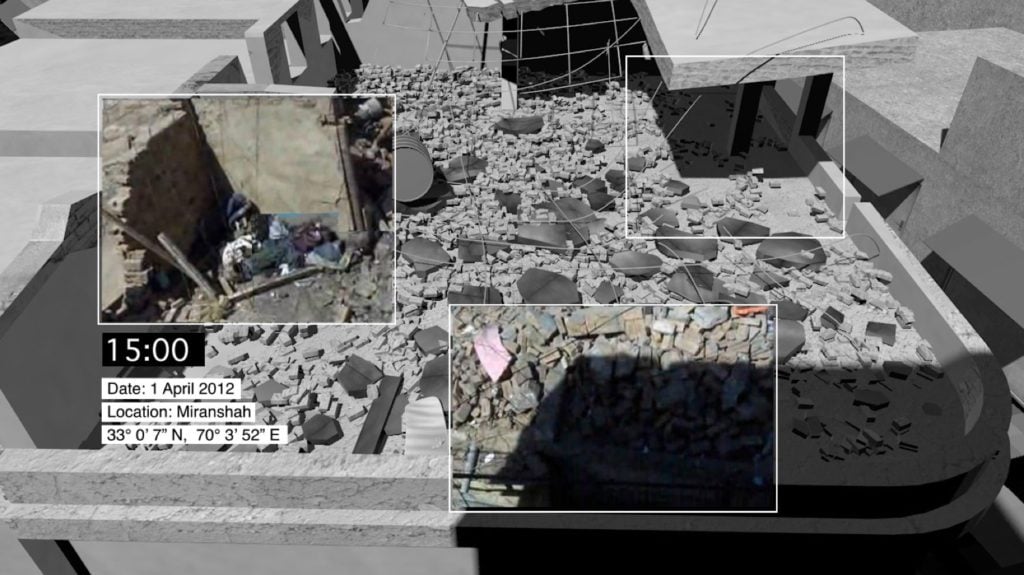
Forensis | Forensic Architecture in collaboration with SITU Research, DRONE STRIKES: UNMANNED AERIAL VIOLENCE | “The Architecture of Memory.” Visualization: © Forensic Architecture and SITU Research.
An exhibition which changed my idea of what an exhibition can do forever is “Forensis, the Architecture of Public Truth“ at Haus der Kulturen der Welt, Berlin, curated by Anselm Franke and Eyal Weizman. It followed investigative sciences and their aesthetics and created new possibilities of how complex, brilliant, and precise an exhibition can be.
—Nina Zimmer, director of the Zentrum Paul Klee and the Museum of Fine Arts Bern

Cady Noland at Museum MMK für Modern Kunst, Photo: David Griffin
Susanne Pfeffer’s first exhibition at MMK in Frankfurt became a real pilgrimage in which she managed to present, for the first time in decades, the work of the highly influential artist Cady Noland, which could have not been more poignant, both in content but also in form. Pfeffer and Noland used the collection of MMK to built a retrospective of sorts while simultaneously putting the Hollein building on display. A perfect marriage, on all levels.
—Krist Gruijthuijsen, Director, KW Institute for Contemporary Art
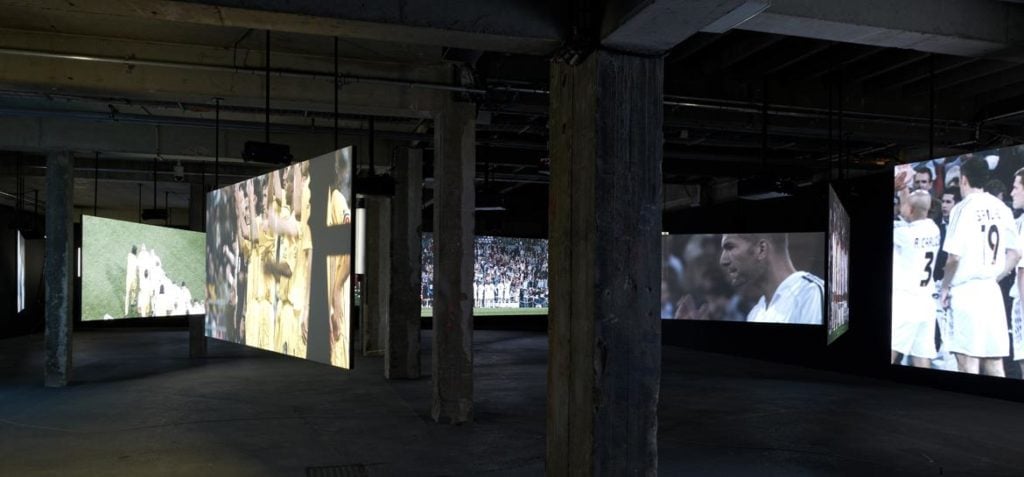
Installation view of Philippe Parreno, “ANYWHERE, ANYWHERE OUT OF THE WORLD” (2013). Courtesy of the Palais de Tokyo.
Philippe Parreno’s “ANYWERE, ANYWHERE OUT OF THE WORLD” at the Palais de Tokyo, Paris, 2013 Parreno’s masterful syncopation of light, architecture, and sound across the public and private spaces of the Palais de Tokyo signaled a new form of multi-sensory exhibition as well as a fresh approach to the artistic retrospective. It stands out in a decade obsessed with the immersive installations.
—Olga Viso, independent curator
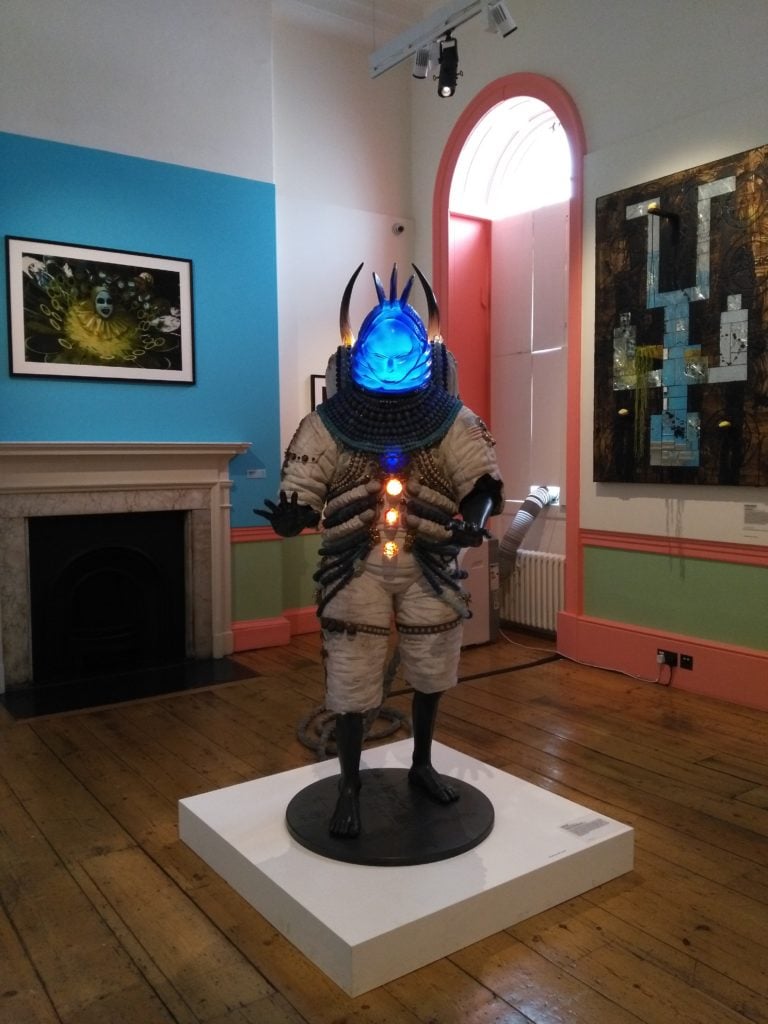
Zak Ové’s “Get Up, Stand Up Now” at Somerset House in London, 2019. Courtesy of Somerset House.
In the UK I would say Zak Ové’s “Get Up, Stand Up Now,” a recent exhibition and, although we are yet to see the lasting impact it will have on the cultural scene, I have no doubt that it will. In the phenomenal exhibition 50 years of Black creativity was celebrated, bringing together the work of more than 100 interdisciplinary artists.
—Touria El Glaoui, founding director of the 1-54 fair
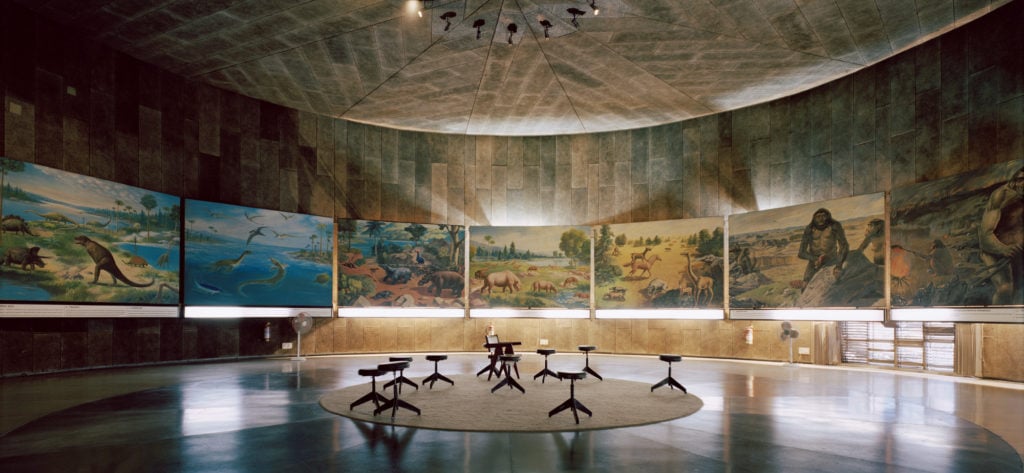
Museum of Evolution of Life, Chandigarh, India, 2014 | © Armin Linke/ Anthropocene Observatory
Not a show per se but a curatorial initiative that includes exhibitions, public programs, publications, and much more, the Anthropocene Project at Haus der Kulturen der Welt, launched in 2013, has critically explored the most pressing environmental and ecological issues of our time in a sustained and intersectional manner.
—Alexis Lowry, curator at Dia Art Foundation
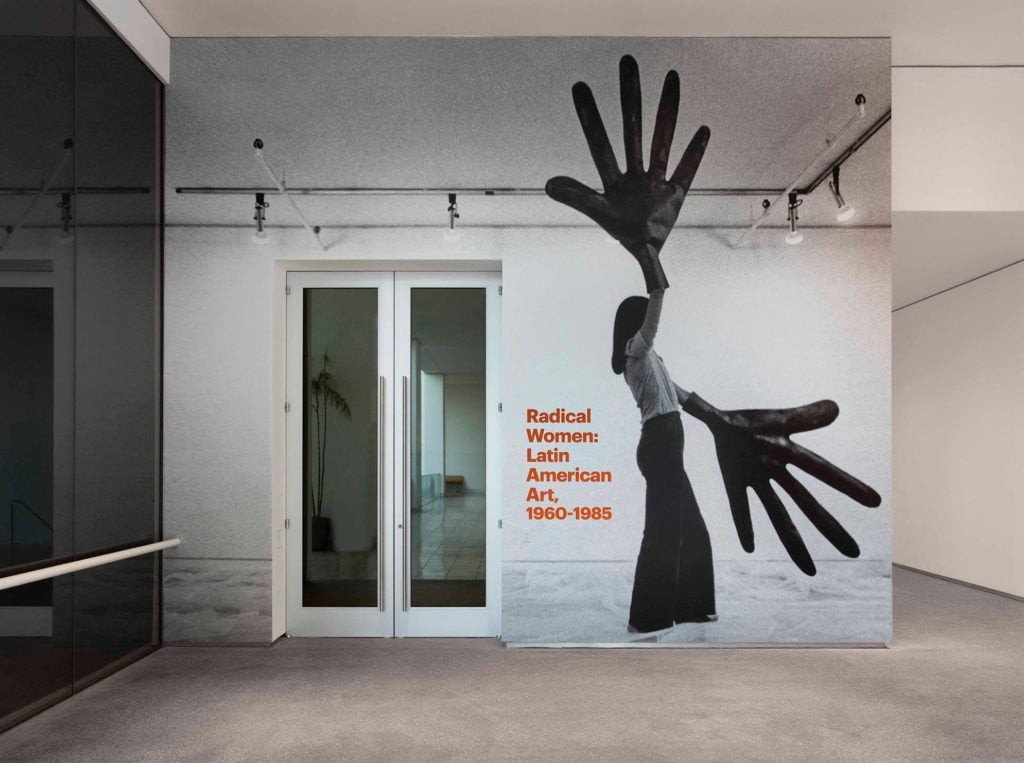
The entrance to “Radical Women: Latin American Art, 1960–1985” at the Hammer Museum at UCLA, one of the Getty Pacific Standard Time: LA/LA exhibitions. Photo courtesy of the Hammer.
The exhibition presented the work of a whole generation of Latin American women artists. The work of the more than 120 Latin American and Latina artists and collectives is being reappraised and the focus of individual and group shows. As pioneers in many fields, including performative practice, the artists are being understood for their prescient work during politically and socially turbulent times.
As a group of shows, the art fairs have really transformed the way art is purchased and even made and experienced. The prominence of the digital experience, either through pre-fair offerings, or the Instagrammable allure of a work, adds to the rushed evaluation or quasi-appreciation of works many times being the first venue where they are exhibited.
Similarly, in terms of breaking barriers of how the art canon is perceived, Alexander McQueen’s show at the Met was very influential in terms of bringing fashion and celebrity culture into museums.
“Posing Modernity: The Black Model from Manet and Matisse to Today,” curated by Denise Murrell, turned the tables on exploring familiar material through a different lens, that of the black model.
Finally, the Tate’s Turbine Hall and the Paris Grand Palais’s large-scale installation exhibition series early in the decade were also very influential in terms of transforming the scale of art works at museums and institutional venues, bringing in larger audiences with them.
—Estrellita Brodsky, collector and art historian
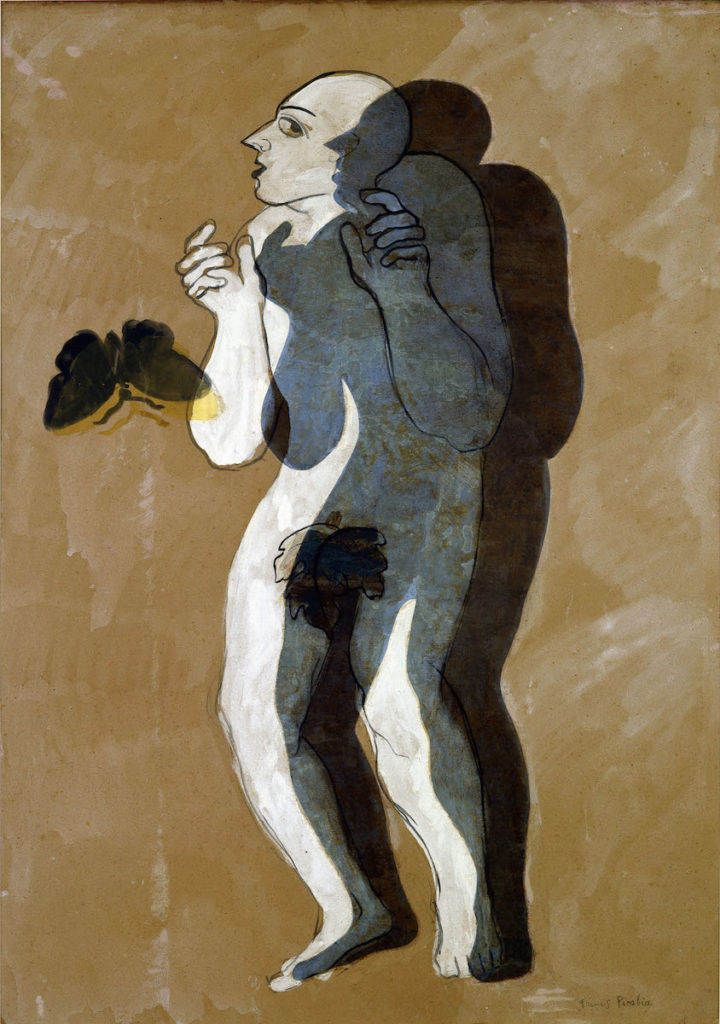
Francis Picabia, L’Ombre (1927-28). Image ©ADAGP, Paris and DACS, London 2017.
An incredible show articulating the rhetorical gesture and foresight of the artist. There is a pleasure in the false starts mixed with an indexical humor. The resistance of the artist in the age of the machine. This direction and attitude is now everywhere. The subjective is now everywhere and yet uniformly distrusted. He maps this out with delicacy and relish.
—Sarah Morris, artist
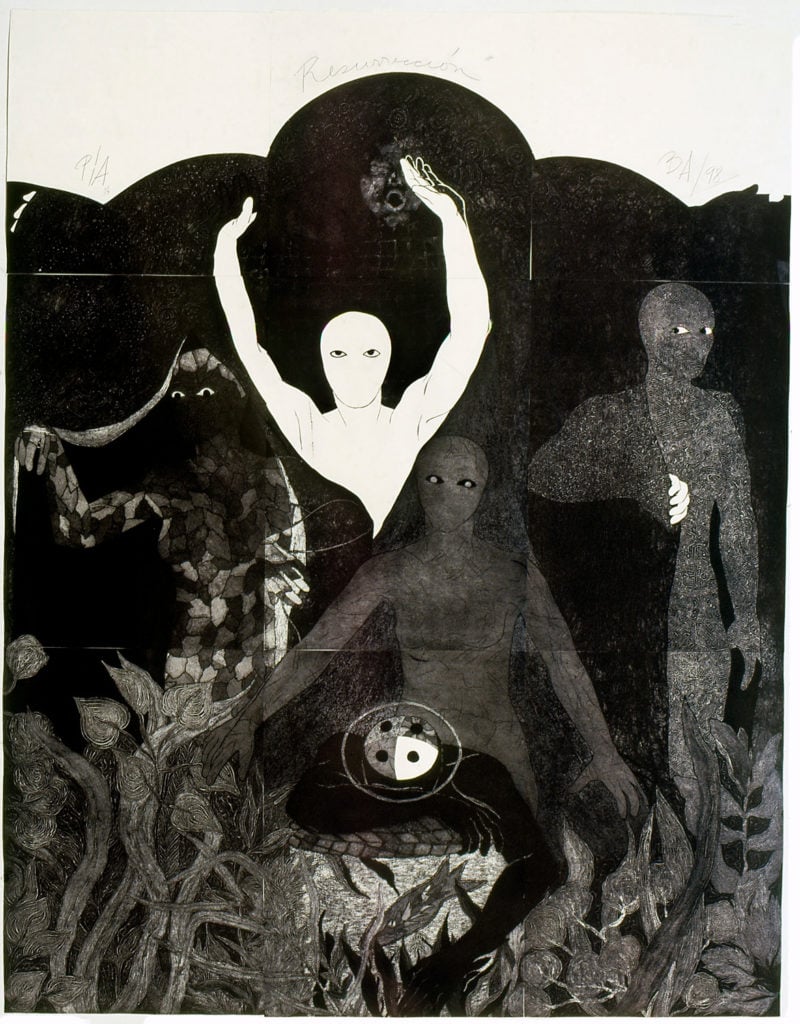
Belkis Ayón, Resurrection (1998), in “NKame: A Retrospective of Cuban Printmaker Belkis Ayón,” at El Museo del Barrio. Collection of the Belkis Ayón Estate.
Ever since seeing it in summer 2017, NKAME: A Retrospective of Cuban Printmaker Belkis Ayón, curated by Cristina Vives for El Museo del Barrio, has been on my mind. The grace and care of the exhibition was at once an elegy to this gone-too-soon, seen-too-rarely artist, and an astoundingly beautiful exploration of her practice. Balancing a studious look at Ayón’s unique and textural approach to collography, with a riveting introduction to her re-imaginings of the male myths of Abakuá, it navigated complex subjects with an accessible, visually arresting approach, one that should serve curators well as major museums begin to give under-known women artists like Ayón a wider audience.
—Carmen Hermo, curator at the Brooklyn Museum
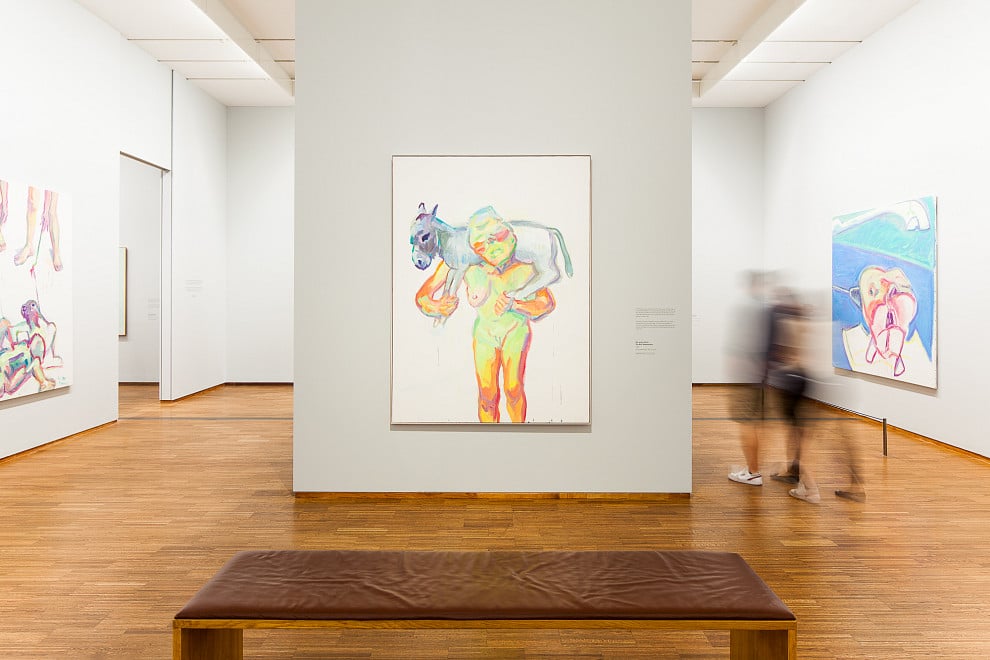
Installation view of “Maria Lassnig” at the Albertina. Photo: © Robert Bodnar.
The exhibition, “Maria Lassnig—Ways of Being” at the Albertina Museum, Vienna, and the Stedelijk Museum, Amsterdam, which marked the artist’s centenary this year, was simply astounding. I discovered new aspects to her creative vision, and seeing such a comprehensive body of works was intensely powerful and moving.
—Manuela Wirth, co-owner Hauser and Wirth

Installation view of “Seth Siegelaub” at the Stedelijk Museum, 2015.
The “father of Conceptual art,” who redefined the exhibition space, was also a distinguished collector who gathered a unique ensemble of books on the social history of textiles and a mesmerizing textile collection comprising more than 750 items from all parts of the world.
—Marc-Olivier Wahler, director of the Geneva Museum of Art and History
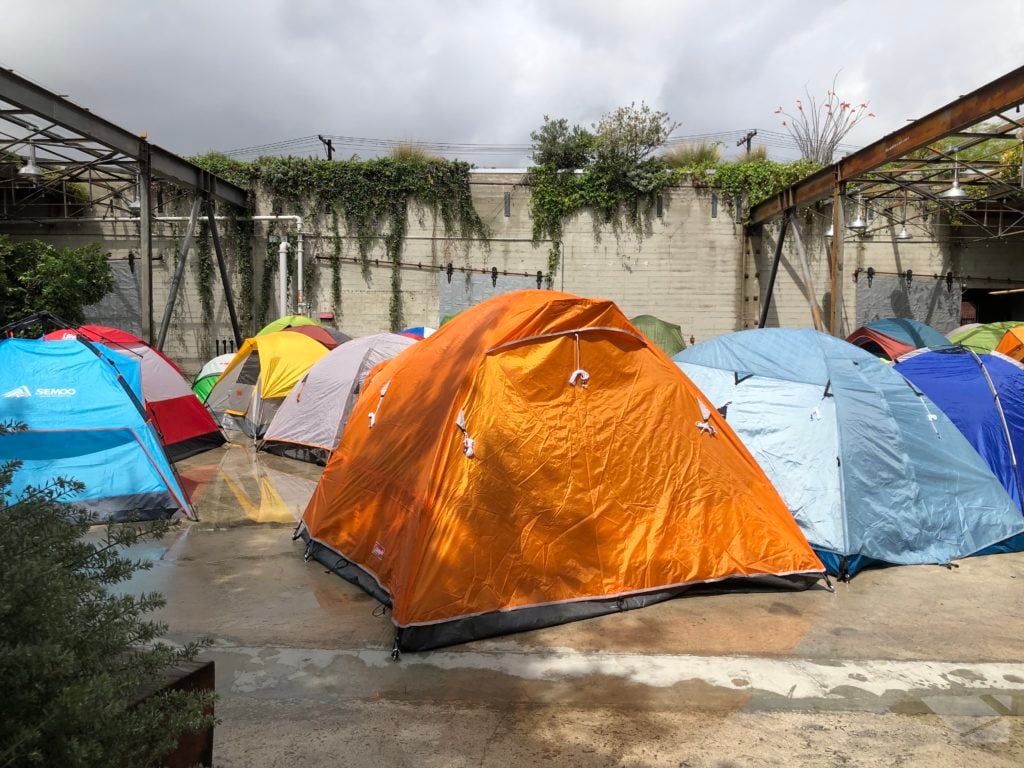
Installation view of “David Hammons” at Hauser & Wirth, Los Angeles. Photo: Janelle Zara.
Regarding Hammons: those who really know, don’t tell—and follow Hammons by keeping the provocative secret to themselves. This exhibition more than any other allowed viewers a window into the influence of an artist who has been called a shaman and a showman. Plus, this sprawling exhibition of high ambition was dedicated to the inimitable free jazz artist Ornette Coleman, whose inventions in music are somewhat akin to Hammons’ inventions in art.
—Arnold Kemp, dean of graduate studies, School of the Art Institute of Chicago
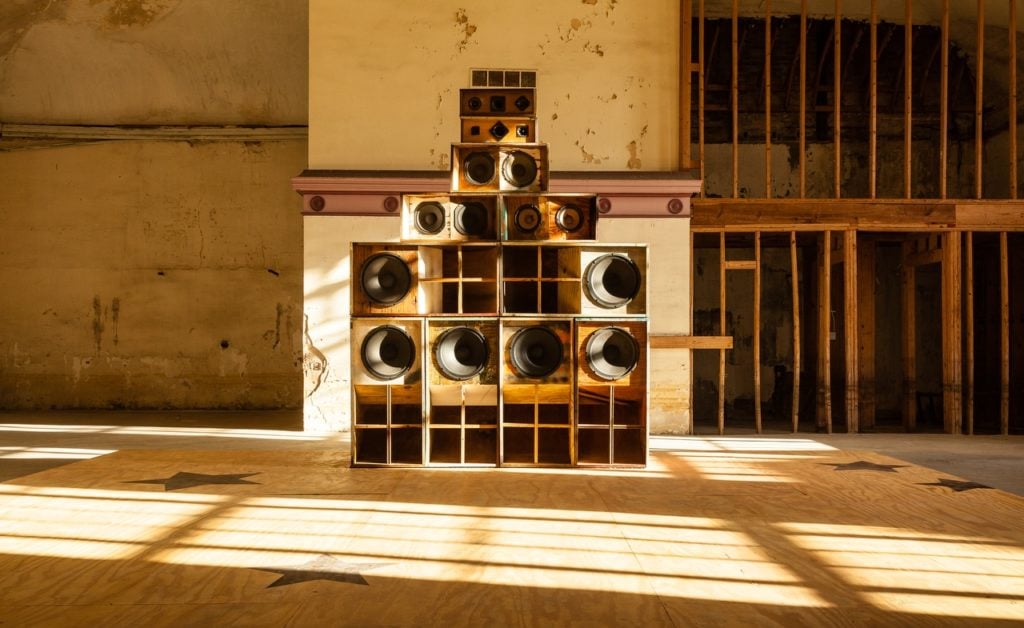
Gary Simmons, Recapturing Memories of the Black Ark (2014), installation view during “Prospect.3: Notes for Now,” a project of Prospect New Orleans. Photo: ©Scott McCrossen/FIVE65 Design, courtesy of the artist and Metro Pictures, Anthony Meier, Simon Lee, and Regen Projects.
There are many highlights, from ambitious research shows like “Radical Women: Latin American Art, 1960-1985,” “Postwar: Art between the Pacific and the Atlantic, 1945-1965,” and “We Wanted a Revolution: Black Radical Feminism 1965-85,” to prescient shows such as “Outliers and the American Vanguard Art and Triggered: Gender as a Tool and a Weapon.” But, collectively, Prospect in New Orleans exerted sustained influence throughout the decade. The Prospect exhibitions have come to represent some of the biggest changes in art this decade. It shifted attention from the established artistic centers to the American South; it championed local artists alongside global ones; created meaning and projects on a shoestring budget (in caparison with its European biennial counterparts); tackled the lasting legacy of colonialism and slavery; and became a proving ground for some of the most exciting artistic voices today, including John Akomfrah, Firelei Baez, Allora & Calzadilla, Nick Cave, Njideka Akunyili Crosby, Nicole Eisenman, Theaster Gates, Jeffrey Gibson, Camille Henrot, Isaac Julien, William Pope L., Wangechi Mutu, Amy Sillman, and Hank Willis Thomas, to name just a few. And with an all-female team heading the next Prospect, I have no doubt it will continue to be a show to watch.
—Eva Respini, chief curator at ICA Boston